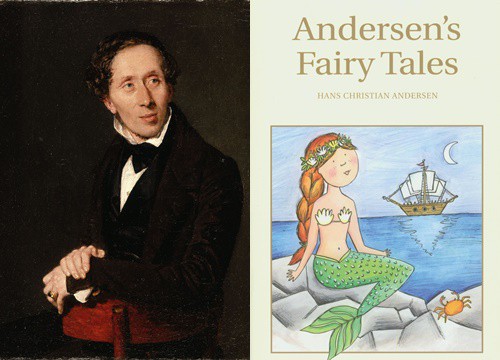Andersen - The father of "The Little Mermaid" was despised by people from childhood to adulthood for this reason

3 | 0 Discuss | Share
Margaret Mitchell is the author of the legendary novel Gone With the Wind. Released to readers in 1936, this work has caused an unprecedented resonance, turning Margaret Mitchell from a wife who only knows how to take care of the housework to become a top literary star.
Margaret Mitchell was born in 1900 into an intellectual family in Atlanta. Her father was president of the Atlanta Historical Society. After graduating from Smith College, Mitchell became a medical doctor. But after the death of her mother, she decided to return home to take care of her father and younger brother. In 1922 she married Berrien Kinnard Upshaw and worked as a reporter for the Atlanta Journal under the pen name Peggy Mitchell. The marriage broke up not long after, but in return, Mitchell quickly succeeded in the role of a journalist. In 1925, Mitchell remarried John Robert Marsh - an advertising man. In 1926, a sudden accident caused an ankle injury that forced the future writer to give up journalism forever. She lived quietly and hid in "The Dump" - the name she gave herself to her small room in the couple's apartment on Crescent Avenue.
Margaret Mitchell is an energetic, tough woman who is also very emotional. During the days of convalescence in her "garbage", she asked her husband to borrow books from the Atlanta library to read to ease her sadness. Augusta Dearborn - a friend of the couple - recalled: "One day, John brought a stack of books to his wife's room and said, 'I brought you all the books you can read from the library. there. You should write something for yourself."
The next day, Marsh bought Margaret a Remington typewriter with the elegant greeting: "Ladies, welcome to a new career". When Margaret asked her husband what he should write about, Marsh responded with an answer that echoes the words of editors-in-chief: "Write what you know."
Recalling the stories told by relatives and people who participated in the Civil War of the 1860s, Margaret Mitchell secretly began to write the greatest novel of her life. Very few people know that Margaret is writing a book and John Marsh is the only one who can read the pages of her recently completed manuscript.
Because the apartment of the couple John and Margaret was a place where friends were often received, so Margaret had to work hard to hide her manuscript pages. She shoved the manuscript under the bed, under the sofa, and even folded the rewritten pages to fit on the legs of the docking chair.
Harvey Smith - a family friend - recounts: "When I go to Marsh's house, I often see Margaret working with a pile of papers on the small writing desk. We joke together: "She is writing a novel. It's the greatest theory in the world." And my God, it's true. The novel was finished, but Margaret still refused to tell her friends about its existence. Gone with the Wind would never have reached readers without Lois Cole. Cole is a close friend of Margaret, she works at the prestigious Macmillan Publishing House in New York. Once, Cole read pages of manuscripts strewn about in Mitchell's "Trash". She immediately revealed to Harold Latham - director of the publishing house - about her smart, witty Atlanta friend's book and affirmed that it could be a treasure of American literature. "If she's as engaging and engaging when she writes as she is when she talks, that would be a great product," Cole whispered to Latham.
During a business trip to Atlanta to sign publishing deals with new authors, Latham remembered Margaret Mitchell and found her. But Mitchell insisted that she did not write any novels. On her last day in Atlanta, when meeting Margaret with her friends, Latham once again mentioned the book. Just like last time, Latham continued to receive shakes of the head in denial. But after the director got into the car to return to the hotel, Margaret was "interrogated" by friends.
"You wrote a novel, Peggy? Why didn't you tell us about this? Why didn't you show it to Mr. Latham?" one of them asked in a rush.
Calm and seemingly nonchalant, Margaret explained: "It was a crap book. It made me feel ashamed." Immediately, another person attacked: "Oh well, I bet you don't have the body of a writer. Aren't you going to strive your whole life to be a novelist?". Annoyed, Margaret rushed home, picked up the messy manuscripts from "The Garbage", stuffed it in a suitcase and drove straight to the Georgian Terrace Hotel. She called Latham out into the hallway and said, "Take it, before I change my mind."
The manuscript that Latham read was a panorama of the Civil War and Reconstruction that took place in late 19th century America. The main character was a young woman named Pansy O'Hara. The book has no first chapter. Margaret wrote the last chapter first. Latham commented, he did not like the name of the main character. And Pansy O'Hara was changed by Margaret to Scarlett. Originally, the novel was titled Tomorrow is another day. This sentence was later transformed into the closing sentence of the work. The title Gone with the Wind was later taken by Margaret from a verse of Ernest Dowson.
That was the starting point for the most successful novel in the history of American literature. It was published on June 30, 1936, and became a publishing phenomenon in the country during the 1930s. Pulitzer Prize-winning writer George Goodwin recalls: "At that time, all the ladies were busy reading. Gone with the Wind You can't imagine the sheer force of this wind that swept the people of Atlanta in the summer of 1936. People stayed up all night reading. Finally, when they got their hands on one, I just understood why. God, I can't take my eyes off the page."
In the 1930s, John Steinbeck was the "big tree" of American literature with The Angry Grapes - a novel that reflected the precarious fate of the American people during the hurricane of the economic crisis. in the early 20th century. The work was adapted into a film and has sold 14 million copies to date. People thought that no one could be more successful than Steinbeck.
But with a cover price of $3 (equivalent to about $43.5 today) - a figure that was not modest during the economic crisis of the 1930s, Gone with the Wind still sold 178,000 copies in three weeks. Firstly. In April 1938, after 21 months of reigning on the best-seller charts, sales of the work reached 2 million copies. To date, 30 million copies have been sold worldwide. A statistic shows that, currently, each year, about 250,000 copies of Gone with the Wind continue to be sold in the US and about 100,000 copies in other countries around the world. The novel also won Mitchell the Pulitzer Prize in 1937. Like Harper Lee - the author of a single book, After Gone With the Wind, Mitchell did not have any other significant novels. In 1949, at the age of 48, she was run over by a drunk taxi driver in Atlanta.
Stephenie Meyer – From anonymous housewife to world famous Twilight mother  Hà Hà16:25:29 15/09/2021Stephenie Meyer (née Morgan), born on December 24, 1973, is best known for her four-volume vampire novel series Twilight, which has been translated into 37 languages, with record sales. over 100 million copies. Meyer has many records as the best-selling author of 2008 with more...
Hà Hà16:25:29 15/09/2021Stephenie Meyer (née Morgan), born on December 24, 1973, is best known for her four-volume vampire novel series Twilight, which has been translated into 37 languages, with record sales. over 100 million copies. Meyer has many records as the best-selling author of 2008 with more...

3 | 0 Discuss | Share

1 | 0 Discuss | Share

5 | 0 Discuss | Share

4 | 0 Discuss | Share

2 | 0 Discuss | Share

4 | 0 Discuss | Share

4 | 0 Discuss | Share

4 | 0 Discuss | Share

3 | 0 Discuss | Share

3 | 0 Discuss | Share

5 | 0 Discuss | Share

5 | 0 Discuss | Share




3 | 0 Discuss | Report